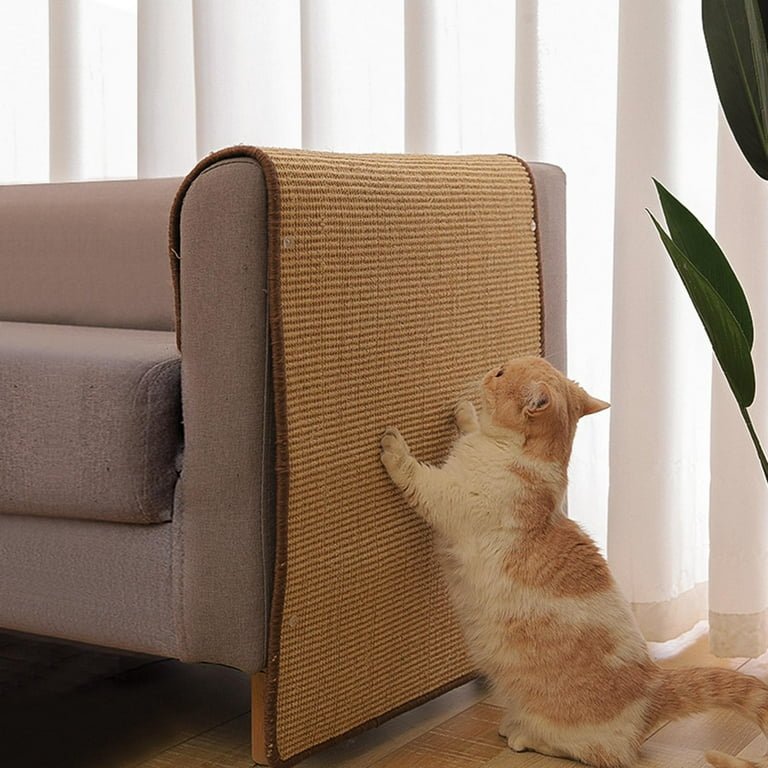Using Eco-Friendly Furniture In Commercial Coworking Spaces
Can eco-friendly furniture be used in commercial coworking breakout spaces and collaboration areas? The answer is a resounding yes! In today’s world, where sustainability is at the forefront of our minds, finding eco-friendly solutions for every aspect of our lives has become increasingly important.
When it comes to creating comfortable and inviting breakout spaces and collaboration areas in commercial coworking spaces, incorporating eco-friendly furniture is not only possible but highly beneficial.
By seamlessly blending sustainable materials and design, these spaces can become not just functional, but also visually appealing and environmentally conscious. So, let’s dive deeper into the endless possibilities of integrating eco-friendly furniture into these dynamic workspaces!
Eco-Friendly Furniture In Commercial Coworking Spaces:
Sustainable practices and environmental consciousness have become increasingly important in our modern society. As individuals and businesses strive to reduce their carbon footprint and make responsible choices, eco-friendly furniture has gained significant attention. This trend has extended beyond residential spaces, with more commercial establishments, including coworking breakout spaces and collaboration areas, considering the use of sustainable furniture options.
The concept of a coworking space has transformed the way people work, fostering a sense of community and collaboration. Coworking breakout spaces and collaboration areas are designed to provide an open and flexible environment for professionals to brainstorm, exchange ideas, and work together. As these spaces are frequented by individuals from diverse backgrounds and businesses, it is crucial to create an atmosphere that caters to their needs while also aligning with sustainable principles.
In this article, we will explore the various aspects of using eco-friendly furniture in commercial coworking breakout spaces and collaboration areas. We will delve into the benefits of eco-friendly furniture, the different types available, challenges in implementation, and practical considerations for businesses looking to incorporate sustainable practices into their workspace.
The Benefits of Eco-Friendly Furniture in Coworking Spaces
Using eco-friendly furniture in coworking breakout spaces and collaboration areas can offer numerous advantages, both for the environment and the individuals utilizing these spaces. Some key benefits include:
Environmental Impact Reduction
By opting for eco-friendly furniture, coworking spaces can significantly reduce their environmental impact. Sustainable furniture is typically made from renewable or recycled materials, minimizing resource depletion and reducing waste. Additionally, eco-friendly furniture often utilizes non-toxic materials and finishes, leading to a healthier indoor environment.
Enhanced Well-being and Productivity
Eco-friendly furniture is designed with user comfort and well-being in mind. Many sustainable furniture options prioritize ergonomic features, ensuring optimum support for users during extended periods of work. Comfortable and supportive furniture can contribute to improved productivity and overall well-being.
Positive Brand Image
Incorporating eco-friendly practices, such as the use of sustainable furniture, can enhance a business’s brand image. Consumers and professionals alike are increasingly conscious of the environmental impact of their choices. By showcasing a commitment to sustainability, coworking spaces can attract like-minded individuals and businesses.
Types of Eco-Friendly Furniture for Coworking Spaces
When considering eco-friendly furniture for commercial coworking breakout spaces and collaboration areas, several options are available. Each offers its unique sustainability features and aesthetic appeal. Here are some popular choices:
Recycled and Upcycled Furniture
Recycled and upcycled furniture repurposes materials that would otherwise end up in landfills. These pieces often have a distinctive and eclectic style while reducing waste and minimizing the need for new resource extraction.
Sustainable Wood Furniture
Sustainable wood furniture is sourced from responsibly managed forests, where trees are replanted to ensure a continuous supply. This type of furniture promotes forest conservation and supports the use of renewable resources.
Bamboo Furniture
Bamboo is a highly sustainable material due to its rapid growth and regenerative properties. Bamboo furniture is durable, aesthetically pleasing, and contributes to a more sustainable environment.
Bio-based and Natural Fiber Furniture
Bio-based and natural fiber furniture utilizes materials such as hemp, organic cotton, and jute. These materials are biodegradable, renewable, and have a reduced carbon footprint compared to synthetic alternatives.
Energy-Efficient Lighting and Accessories
In addition to furniture, incorporating energy-efficient lighting and accessories can further enhance the sustainability of coworking breakout spaces. LED lighting, motion sensors, and energy-efficient electronics minimize energy consumption, reducing the environmental impact.
Challenges and Considerations in Implementing Eco-Friendly Furniture
While the benefits of eco-friendly furniture in coworking spaces are clear, there are challenges and considerations to keep in mind during implementation. Some of the key factors to consider include:
Cost and Affordability
Eco-friendly furniture options can sometimes be more expensive than conventional alternatives. Businesses looking to incorporate sustainable practices must carefully evaluate the budget implications and long-term cost savings associated with eco-friendly choices.
Durability and Maintenance
Ensuring that eco-friendly furniture is durable and requires minimal maintenance is crucial for commercial spaces. Coworking breakout spaces and collaboration areas experience high foot traffic and frequent use. Furniture should be able to withstand this level of usage without sacrificing functionality or aesthetics.
Design and Aesthetic Adaptation
Coworking spaces often prioritize creating an aesthetically pleasing and inspiring environment that fosters creativity and productivity. Integrating eco-friendly furniture seamlessly into the overall design concept can be challenging, especially when incorporating various styles and materials.
Supplier Selection and Transparency
When sourcing eco-friendly furniture, it is essential to choose suppliers who adhere to sustainable practices and offer transparency regarding their sourcing and manufacturing processes. Vetting suppliers and ensuring they meet specific environmental standards is crucial for maintaining integrity in sustainable practices.
User Preferences and Comfort
While sustainability is important, it should not compromise user comfort or preferences. Coworking spaces must consider the diverse needs and preferences of their clients when selecting eco-friendly furniture options. Finding a balance between sustainability and user satisfaction is key.
The Future of Sustainable Furniture in Coworking Spaces
As sustainability continues to gain prominence, the future of eco-friendly furniture in commercial coworking breakout spaces and collaboration areas appears promising. Businesses and individuals are increasingly valuing sustainable practices, and coworking spaces have an opportunity to lead by example.
Innovation in Materials and Design
The furniture industry is continuously innovating to develop new sustainable materials and designs. As technology advances, we can expect to see more eco-friendly options that offer improved aesthetics, functionality, and durability.
Integration of Smart and Sustainable Technologies
Smart technologies can contribute to sustainable practices in coworking spaces. Furniture designs may incorporate smart sensors to optimize energy consumption, provide data on usage patterns, and enable efficient maintenance.
Collaboration with Sustainable Suppliers
Coworking spaces can establish partnerships with sustainable furniture suppliers, fostering a collaborative relationship focused on continuous improvement. Working closely with suppliers can ensure that furniture meets the specific needs of the space while maintaining sustainability standards.
Education and Awareness
Educating users about the importance of sustainable furniture and its impact on the environment can create a culture of conscious consumption. Coworking spaces can host workshops, and seminars, or provide educational resources to promote awareness among their community.
Frequently Asked Questions
Can eco-friendly furniture be used in commercial coworking breakout spaces and collaboration areas?
Yes, eco-friendly furniture can definitely be used in commercial coworking breakout spaces and collaboration areas. Incorporating eco-friendly furniture in these spaces is not only beneficial for the environment but also for creating a healthy and sustainable work environment. Eco-friendly furniture options such as recycled materials, sustainable wood, and non-toxic finishes are available in a wide range of styles to suit various design preferences and needs. These furniture pieces can enhance the aesthetics of the space while promoting a green and eco-conscious image for the company.
What are the advantages of using eco-friendly furniture in commercial coworking breakout spaces and collaboration areas?
Using eco-friendly furniture in these spaces offers several advantages. Firstly, it reduces the consumption of non-renewable resources, as eco-friendly furniture is often made from recycled materials or sustainably sourced wood. Secondly, it helps minimize environmental pollution as many eco-friendly furniture options use non-toxic finishes and adhesives. Additionally, eco-friendly furniture supports a healthier workspace by reducing the exposure to harmful chemicals typically found in conventional furniture. It also promotes a positive brand image for the company, showcasing its commitment to sustainability and environmental responsibility.
Are there any specific certifications or labels to look for when choosing eco-friendly furniture?
Yes, there are several certifications and labels that can help identify eco-friendly furniture. Look for certifications such as the Forest Stewardship Council (FSC), which ensures the wood used is sustainably sourced, or the Cradle to Cradle certification, which focuses on the overall sustainability and recyclability of the furniture. Labels like Greenguard or OEKO-TEX indicate low emissions of VOCs (volatile organic compounds) and harmful substances. These certifications and labels provide assurance that the furniture meets specific environmental and health criteria.
Can eco-friendly furniture be as durable and functional as regular furniture?
Absolutely! Eco-friendly furniture can be just as durable and functional as regular furniture. In fact, many manufacturers prioritize quality and functionality alongside sustainability. Eco-friendly furniture often undergoes rigorous testing to ensure it meets industry standards for durability and performance. Materials like bamboo, reclaimed wood, or recycled plastics can be just as sturdy and long-lasting as traditional furniture materials. By choosing high-quality eco-friendly furniture, you can furnish your coworking breakout spaces and collaboration areas with confidence in their durability and functionality.
Is eco-friendly furniture more expensive than conventional furniture?
While the initial cost of eco-friendly furniture may be slightly higher than conventional furniture, there are long-term cost savings to consider. Eco-friendly furniture is often built to last, reducing the need for frequent replacements. Additionally, investing in sustainable practices can lead to potential tax incentives or grants for businesses. Moreover, the growing demand for eco-friendly products has led to increased competition and improved affordability. Over time, the cost difference between eco-friendly and conventional furniture is offset by its durability, reduced maintenance, potential savings, and the positive environmental impact it brings.
Final Thoughts
Eco-friendly furniture can indeed be effectively used in commercial coworking breakout spaces and collaboration areas. Its sustainable nature not only promotes a healthier environment but also enhances the overall user experience. By incorporating eco-friendly materials and designs, these spaces can create a pleasant and inspiring atmosphere that aligns with the values of modern businesses. Additionally, eco-friendly furniture contributes to a positive brand image and attracts environmentally conscious clients and employees. Therefore, embracing eco-friendly furniture in commercial coworking breakout spaces and collaboration areas is a practical and responsible choice for businesses looking to create a sustainable and inviting work environment.

